
Welcome to Revisiting Disney! Not only did this next film kick-start the Disney Renaissance, it played a major role in how many of us thought our hair would behave underwater, as well as influencing the songs we chose to sing while swimming (because that always worked so well). This is The Little Mermaid! Like always, I have labeled each category so if you want to skip to the parts that interest you most, feel free. And, of course, if you have any thoughts, burning or otherwise, please share in the comments!
BACKGROUND OF THE LITTLE MERMAID
Released on November 17th, 1989, The Little Mermaid is the film that officially kicked off the Disney Renaissance. Based on a fairy tale by Hans Christian Andersen, the Studio actually got the rights in the 1930’s.
According to Thomas, Roy Disney remembers that even as far back as Fantasia, Disney was planning an anthology film, based on a series of Andersen’s work. Although this obviously didn’t happen, Kay Nielsen, who had been art director during “Night on Bald Mountain” in Fantasia, had created some art that would make it into the 1989 film. This was mostly in the storm scene.
When the new management came in, several things happened. First, the animation department was moved off of the main Disney lot, out of the building that had been created specifically for animation. In the “Making Of” feature, several animators say that this was the best thing that happened to the animation department, allowing the new team to come into their own.
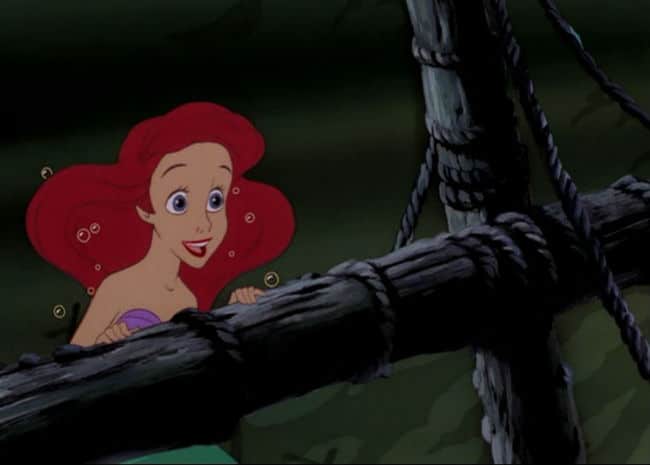
Photo: Disney
The other thing that happened was that Michael Eisner, Jeffrey Katzenberg, and Roy Disney asked 20 animators to come up with three ideas for an animated film. Ron Clements came across a book of Andersen’s tales and was inspired by the story of “The Little Mermaid,” so he pitched it and it was one of the films to get a green light (another was Oliver & Company). Around this time, he also pitched the idea for Treasure Planet, a film he and John Musker would bring up many times until it was made in 2002. We’ll come back to that film later.
Written and directed by Ron Clements and John Musker, The Little Mermaid was produced by John Musker, Maureen Donley, and Howard Ashman. Having Howard Ashman, who wrote the lyrics for the songs, involved as a producer means that the songs are seamlessly integrated into the plot. Ashman and Alan Menken (who wrote the score), were both from Broadway, a thing that is seen in the way music fits into the plot of The Little Mermaid. We’ll talk about this more below.
The Little Mermaid was nominated for a Golden Globe in the category of Best Motion Picture in 1990. It didn’t win, but Beauty and the Beast would win in 1992. However, The Little Mermaid did win the Oscar for Best Music, Original Song (“Under the Sea,” also being nominated for “Kiss the Girl”) and for Best Music, Original Score.
MUSIC
Like I said above, The Little Mermaid was nominated for several Academy Awards in 1990, winning two of them in the music category. While the music for the other Disney movies created after Walt’s death was, for the most part, good, the use of songs as part of the plot feels like a callback to the days of the Sherman Brothers.
The addition of the talented Howard Ashman made a big difference in both The Little Mermaid and, later, in Beauty and the Beast. Howard Ashman came from Broadway, where he had written a little show called Little Shop of Horrors, and he wrote the screenplay for the film adaptation. He was lyrics while Alan Menken was music, and this songwriting duo was very involved in the film’s development.
The two men also had experience on Broadway, and this meant that the music was basically just an extension of talking. I remember hearing in a piece for Beauty and the Beast that Howard Ashman believed that a song had to drive the plot, and all of the songs do. They fit seamlessly into it, and the show feels a bit like a Broadway show. It would be adapted to the stage later in 2007.
Pat Carroll, who voiced Ursula, was not the first choice to play that part. Originally, Ursula was created with Bea Arthur in mind, though she had to turn it down due to her schedule with The Golden Girls.
Can you imagine someone other than Pat Carroll voicing Ursula? I can’t.
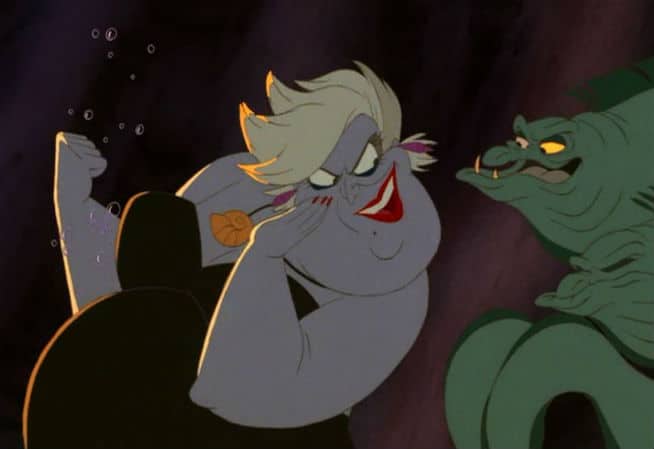
Photo: Disney
During the “Making Of” feature, Carroll mentions that it had been a lifelong dream to voice a character in a Disney film and that she had an absolute blast. She also shares that before recording “Poor Unfortunate Souls,” she asked Ashman to sing it for her. He got into character, even ad-libbing some lines. She asked if she could steal his adlibs, and he told her he had hoped that she would.
The idea behind the music, other than making it organic and feel like part of the story, was to make it different than anything else the studio had used before. This gave us the more reggae-style “Under the Sea,” and according to the “Making Of” feature, was a major factor in making Sebastian a Jamaican crab.
Voiced by Samuel E. Wright, Sebastian is the nervous wreck of a court composer, who is tasked with keeping an eye on Ariel. He goes with her later to try to keep her safe, and is responsible for “Kiss the Girl” and “Under the Sea,” two of the many earworms in this film.
This is one of those films that is just as beautiful to listen to as it is to watch. Menken and Ashman, as well as the talented voice actors that were chosen to sing their songs, were a major part of what makes The Little Mermaid so memorable.
ANIMATION
According to Bob Thomas, The Little Mermaid was a welcome change of pace for the Disney animators. Animating underwater allows you to play with things that gravity doesn’t affect, he says that “their characters could swim and dive and twirl in the water,” while also pointing out that an underwater civilization was full of creative opportunity (Thomas 1992: 119-20).
This also created some unique issues, however. For example, although computer animation was used, there were things done by hand. There was an entire Special Effects Animation team, dedicated to the bubbles, the storm, the lightning, and “anything else that moves and isn’t a character,” as effects animator Randy Fuller said. Although they used a lot of their rain effects from Pinocchio and Bambi, they did have to animate everything else.
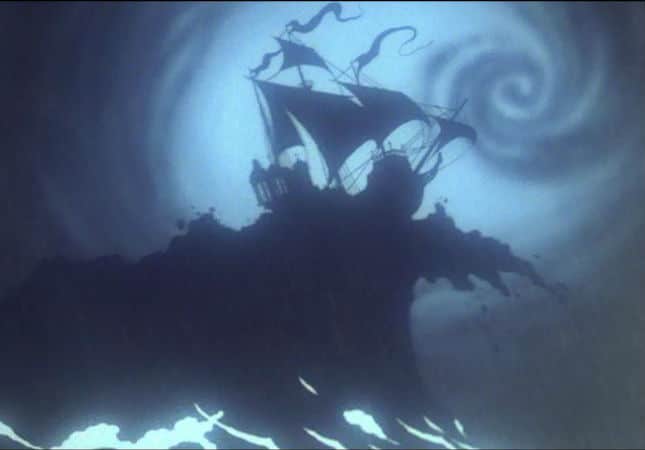
Photo: Disney
The above shot is one of my favorites and is based on Kay Nielsen’s concept art for the proposed short in the ’30’s. It was also based on a Japanese woodcarving, as they tell me in the “Making Of” features (seriously, it’s worth getting the special edition versions just for those. I’ve learned so much).
The effects team in this film are the unsung heroes of The Little Mermaid, in some ways. The effects are beautiful, with the storm especially being an animation tour-de-force, and one of my favorite pieces of animation ever seen in a Disney film. In this scene, the characters and the effects fit together in a seemingly seamless manner.
One of the members of the effects team said in the “Making Of” feature that he lost count of how many bubbles he drew, since every time a bubble moved, that was a series of stills. According to the IMDB, the directors insisted that every bubble be hand-drawn, despite the Xerox technology, to give it a more real look. They also say that most of the bubbles (there were millions) were sent to Pacific Rim Productions in China, where a student uprising occurred not too far away.
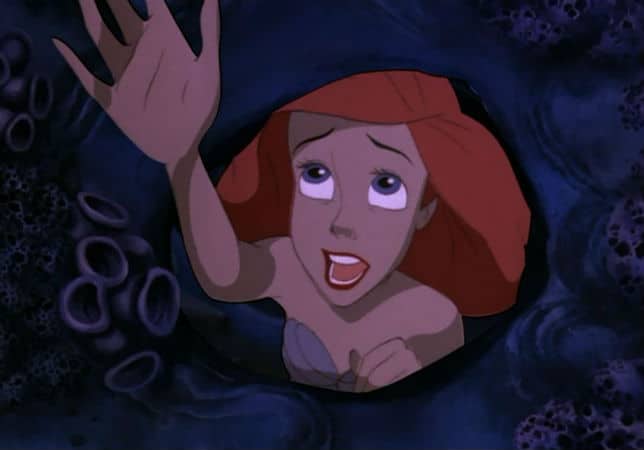
Photo: Disney
The picture above is from a scene that was one of the last things that was completed. This was because of the shadowing and the way that the light and shadows interact with her face and the background as well. It looks effortless, but apparently it wasn’t. It really is a fabulous piece of animation.
Although The Little Mermaid didn’t use the Xerox process for the bubbles, it did utilize that process in the rest of the film. It would be the last Disney film to use Xeroxing, as new tools were replacing those invented earlier.
In their book on Disney villains, Ollie Johnston and Frank Thomas talk about Roy Disney’s impact on the film. He had worked on many of Disney’s nature films and pointed out that to capture Ursula, it was important to watch and capture the way octopi move. He worked with Ruben Aquino to make her work and operate the way she should as an octopus.
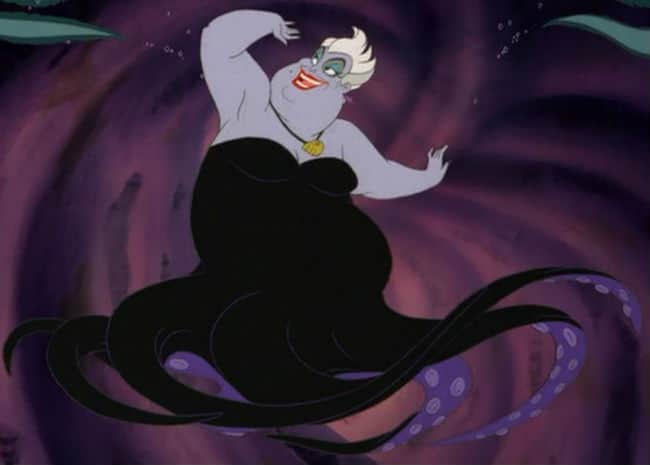
Photo: Disney
At the end of the film, Ariel and Eric’s wedding used what is called CAPS, Computer Animation Production System. This was a new technology that replaced the old ink-and-paint system, placing the drawings on the backgrounds and coloring them digitally. The rest of the film used the traditional style while The Rescuers Down Under would utilize the system more fully.
THE PLOT
The Little Mermaid starts out with one of the greatest openings. The opening number, a shanty sung by sailors, is sung while a majestic ship cuts through the waves. The sailors teach a young man about the ocean and the merpeople, ruled by King Triton.
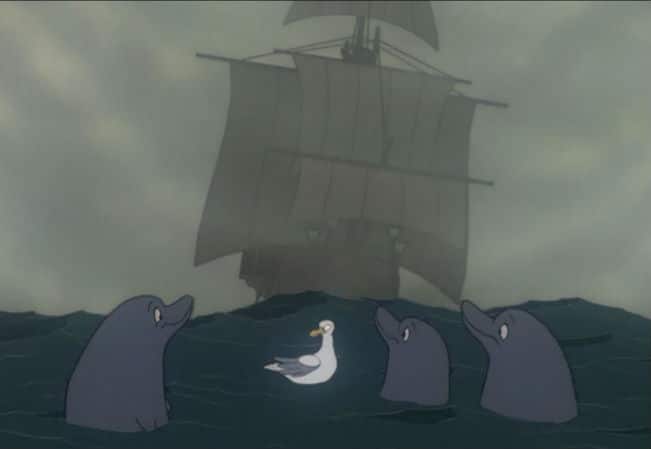
Photo: Disney
When Grimsby, who appears to be a butler of some kind, mentions that this is all “nautical nonsense,” one of the old sailors takes offense. The sailing, as far as an animated film goes, isn’t portrayed too badly, so that was exciting. In the confusion, a fish escapes from the net that has trapped his entire school. As he swims to safety, we see the beautiful underwater kingdom and all the plants and animals there.
Then, we see merpeople. They are all headed toward a beautiful palace and, we learn, a concert given in honor of the King and performed by his daughters. It’s also the debut of Ariel, the youngest princess. The concert seems to be going well, and Sebastian, the court composer, seems pleased until they discover that Ariel isn’t there. They turn the spotlight on her, and her place is empty.
Of course, King Triton is not amused, and the whole concert is pretty much ruined too. Poor Sebastian, and poor sisters, all that hard work! Alas. Our next shot, however, shows us the missing mermaid, exploring a graveyard of sunken ships with her friend Flounder. Flounder’s fear and nervousness about the admittedly very creepy place make me realize that, in fact, I am Flounder.
Flounder’s fear of sharks in such a creepy place, however, turns out to be a realistic fear, as one of those creatures finds them in the sunken ship. When Flounder turns around, he sees an opened jaw and the shark proceeds to chase the two throughout the shipyard. They’re finally able to out-swim the creature, and trap him in an old anchor. To his credit, Flounder doesn’t say “I told you so.”
Ariel is able to grab a few treasures and takes them to her friend Scuttle, a seagull, to find out what they are. He tells her that the fork is a dinglehopper, something that humans use on their hair. The pipe she has found is called a banded bulbous snarfblatt, a musical instrument. When he tries to play it, she suddenly remembers the concert and runs home.
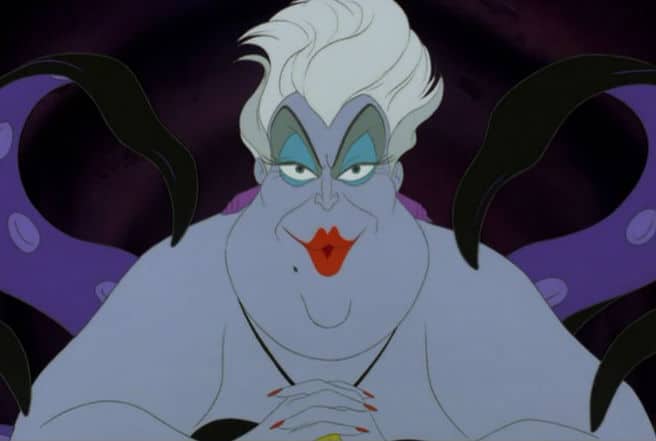
Photo: Disney
Meanwhile, watching our heroine is a pair of sinister-looking eels, who, it turns out, can send a copy of what they are seeing to the sea witch, who is plotting the downfall of King Triton and what I’m sure is a hostile takeover. Seeing her opportunity with the rebellious princess, she orders her minions (Flotsam and Jetsam) to keep an eye on Ariel and see if they can use her in their schemes.
Back at the palace, Ariel is in trouble for missing the concert. Sebastian is embarrassed that the concert was ruined and everyone is laughing at him while Triton is concerned that Ariel just wandered off. When Flounder tried to defend his friend, he accidently mentioned that they went to the surface.
This is, apparently, against the rules, and Triton seems to be afraid that someone will catch her in a net or harpoon her, hence the no-surface rule. When Ariel tells him that she’s 16, and not a child, he reminds her that she does live under his ocean, and will obey the rules he’s set out. She tries to explain, but he doesn’t want to hear it.
Although Triton is concerned that he might have been too harsh, Sebastian tells him that he thinks it was fine; Ariel does need to follow the rules, and maybe needs constant supervision too. Triton decides that he’s right, and sets Sebastian to the task of following and protecting Ariel.
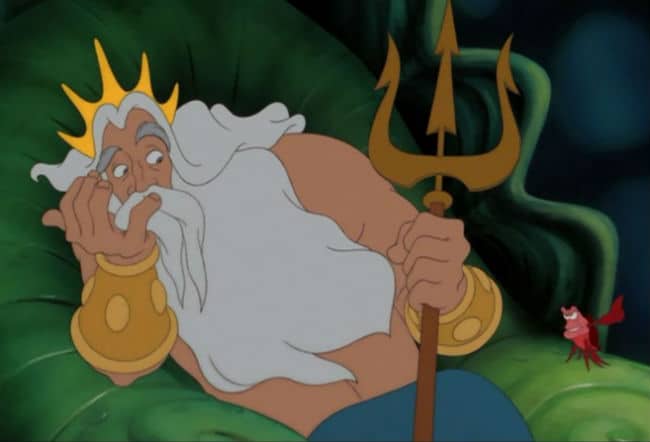
Photo: Disney
Sebastian follows Ariel to her secret grotto, where she has apparently been storing all of the treasures she got from exploring shipwrecks. While there, she sings about how much she wants to be part of the surface world, and how she doesn’t understand how her father can hate the surface (since the things we make are so wonderful).
When Sebastian confronts Ariel about her collection, also forbidden under her father’s “no humans” policy and tries to take her home, a shadow passes over the grotto and she surfaces to see a ship (with fireworks!) and swims to investigate. It turns out to be the ship from the beginning, and the young man turns out to be a prince named Eric, who is of marriageable age and is celebrating his birthday. Ariel is instantly smitten and even more drawn to the world of humans.
The party comes screeching to a halt, however, when the lookout yells out a storm warning; the ship is sailing into a hurricane! When the helmsman loses his grip on the wheel, Eric is able to grab it, but not in time to avoid crashing into the rocks that have appeared out of nowhere. With lightning hitting the mast and the ship on fire, things look pretty bleak.
The crew is thrown overboard, but Eric’s dog Max is still on the ship. Willing to risk his life to save his dog, Eric climbs back on board. The mast snaps and narrowly misses him but sets off a chain of fire toward the gunpowder storage. Carrying Max, Eric is almost off of the boat when he gets his foot stuck.
Since he is the prince, his crew can only watch in horror as the ship explodes, with him on it. Luckily, Ariel is there. She sees him clinging to a board and is able to grab him before he can drown. Hauling him to shore, she hopes she has saved him.
Luckily, he’s breathing. As he wakes up, all that he remembers is a fuzzy outline of a girl and her hauntingly beautiful voice. Since they are in his kingdom, Max and Grim find him and take him back to the palace, with Ariel watching from her hiding place nearby.
She is not unobserved, however, as Ursula’s minions are there and send a report back to their mistress, who senses an opportunity. Ariel, meanwhile, is acting like a lovesick teenager and her sisters and father notice. When Ariel is trying to figure out a way to see Eric again, Sebastian finally decides that enough is enough and turns to his most powerful tool, his musical talent.
Despite the amazing musical number unfolding before her, Ariel and Flounder disappear. When Sebastian is called before Triton because he’s been keeping secrets about Ariel being in love, Sebastian cracks and spills the whole story.
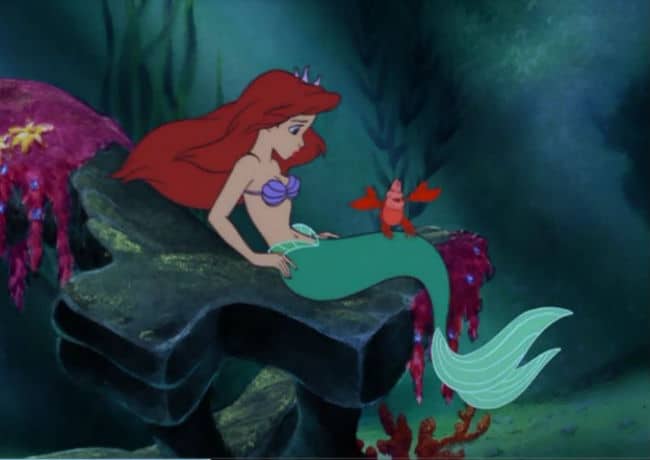
Photo: Disney
Triton goes to Ariel’s grotto and discovers that she has broken more than just the surface and saving a human rule. He is not happy that she disobeyed him in any one of those things, and when she says that she’s in love with the human she saved, Triton lets his temper get the best of him.
Destroying her collection and raining destruction on the grotto, Triton is clearly hoping that he has convinced his daughter to listen to and obey the rules. Of course, this could backfire horribly, and when she goes with Ursula’s minions to get help from the sea witch, we know that it has. Flounder and Sebastian go with her, hoping to talk some sense into her.
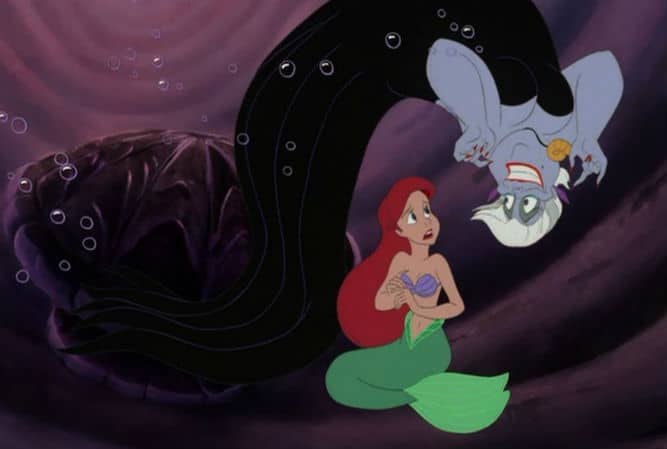
Photo: Disney
Although it seems like a terrible idea, Ariel agrees to give up her voice in exchange for Ursula turning her into a human. In addition, she has three days to get Eric to fall in love with her, and if she fails, she’ll belong to Ursula. Although sad at the idea of not seeing her father or sisters again, she signs the contract and the race against the clock is on.
Sebastian and Flounder help her get to the surface, and she happens to be at Eric’s kingdom. From a distance, Max recognizes her scent and leads the prince right towards her.
Eric thinks that he recognizes her, but when he learns that she can’t talk, he thinks he has to be wrong. Regardless, he isn’t the person to leave a poor shipwreck victim alone. Ariel, once she figures out how humans actually live, makes an impression on Eric, and as they begin to spend time together, he begins to wonder if maybe Ariel is the one for him. This is further helped along by Sebastian’s song, encouraging Eric to kiss the girl.
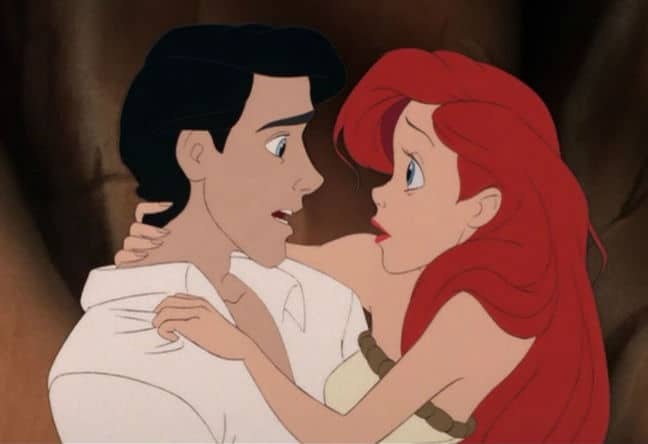
Photo: Disney
Sebastian, meanwhile, is facing the conflict of a crab living in a kingdom by the sea, ie, one that eats lots of seafood. When Eric decides that it might be time to move on from the fantasy of the mystery woman who saved him, Ursula is determined to not lose her prize. Using Ariel’s voice and her own magic, she enchants Eric to forget Ariel and marry her instead, taking on the appearance of the girl who saved him.
Ariel is heartbroken that Eric is marrying someone else, but Scuttle discovers the truth and they plan to sabotage the wedding. She and Flounder head to the wedding ship, Scuttle gets a crew of friends to help stall the wedding, and Sebastian goes to get King Triton, who has been worried sick.
The stalling of the wedding goes according to plan, and even Max gets in on the action. The animals manage to break the necklace that holds both Ariel’s voice and the spell on Eric. Disenchanted, he remembers Ariel and, when he hears her speak, realizes that it was her all along. He’s about to kiss her when the sun sets, meaning that Ariel has lost her deal.
Ursula resumes her true form and grabs Ariel, who now belongs to her. They run into Triton, who, unable to break the contract but also unwilling to see his daughter as the property of the sea witch, takes her place. Ursula has what she wanted; the crown and Triton’s triton.
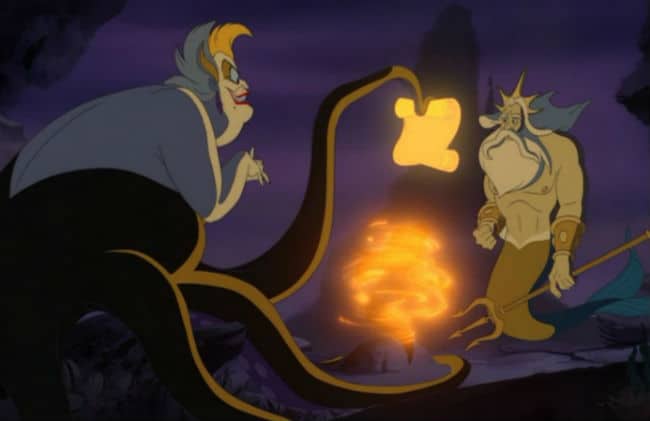
Photo: Disney
Furious at Ursula, Ariel goes after her and is about to be killed when Ursula is struck by a harpoon. Determined to not lose Ariel again, Eric has gone after her. Sending her minions after him, Ursula is preparing to kill Eric when Ariel interferes, causing Ursula to hit her eels instead. They disintegrate and Ursula is madder than before.
Ariel swims after Eric and tries to convince him to leave, but he won’t leave her there alone. Meanwhile, Ursula harnesses the power of the triton (and the ocean) and grows into a giant. She also creates a whirlpool, calling up old ships, and separating our heroes.
Eric finds himself near one of the old wrecks, and manages to climb up a line, while Ariel is at the bottom of the whirlpool, dodging Ursula’s blasts. When it looks like our girl’s luck has run out, Eric is able to maneuver the head rig (the front part of the ship) and rams it straight into Ursula. Diving off of the ship, he swims to safety as Ursula, and the ship sinks beneath the waves. There’s also lightning involved, somehow. Either way, she dies.
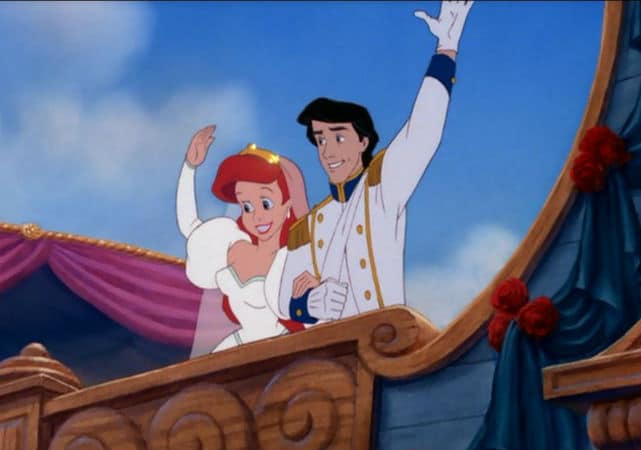
Photo: Disney
As the chunks of Ursula rain down, all her spells are undone. This means that Triton is restored to his throne, and as Triton and Sebastian watch Ariel watch Eric, Triton realizes that his daughter really does love this human, and he seems to love her. He realizes that he has to let her go and that really the only problem left is how much he’ll miss his daughter. He turns her into a human and, at the wedding (which is at sea), gives his blessing. Sebastian finally wins against the seafood loving chef, and with peace between humans and merpeople, it looks like a happy ending for everyone.
SOURCE MATERIAL
The Little Mermaid was based on a fairy tale by Hans Christian Andersen, a Danish writer who was born in 1805 and passed away in 1875. Maria Tatar says that Andersen is “stingy with the use of ‘happily after ever,’” (Tatar 2002: 338). She tells us that while Andersen said that he might have been inspired by stories from his childhood, the stories were given a unique twist.
As an avid reader of fairy tales, I can tell you that if you want a story that will make you cry, you want a Hans Christian Andersen story. The “happily ever afters,” with the violence and the gore, came from the Grimm Brothers. Andersen used his fairy tales to talk about his own struggles, and as the things he observed, focusing on the struggles of people, particularly children (I defy anyone to read “The Little Match Girl” and not get choked up).
Tatar says that Andersen felt that his fairy tales “enabled him to right the wrongs of real life and to even out the scales of justice,” something that is visible in even the most tragic of his tales (Tater 2002: 338). Even though his stories show that “bad things happen to good people or bad things happen to good people,” the ending always has a bittersweet quality that, to me at least, always promised hope (Tatar 2002:335). It was faint sometimes, but it was always there.
“The Little Mermaid” is not one of the stories with a happy ending. I can imagine that many other little girls were just as shocked on getting to the ending of the story and finding out what the ending originally had been. It’s the latest in a long line of stories that Disney gave a happy ending to, despite having a tragic ending originally. Although the shipwreck happened, and the deal with the witch, that’s pretty much where the similarity ends.
The original story didn’t give anyone any names. There were only six princesses in the story, and they also had a grandmother who took care of them. Each princess had her own garden, filled with things that they found in shipwrecks, and their grandmother often told them stories about the world above, which the youngest princess loved.
When each princess turned 15, they were able to rise up to the surface and see what they could see. This puts the “don’t go up to the surface” rule as merely an age limit, which makes sense. Each princess is a year older than the next, and we follow each princess on their journey. Each of the five preferred it down below, but would go up and sing to sailors in shipwrecks, telling the sailors to not be afraid.
However, in the book, the mermaid brings him to the shore near a convent, where a young girl finds him and helps him. He doesn’t realize that the little mermaid saved him, and she slowly becomes sadder and sadder. She often goes up to the spot where she left him but never sees him.
She finally cracks and tells one of her sisters. When they find out what had happened, her sisters find out where the prince lives and bring her to the castle. She begins to go and watch him in the evenings, which leads to her becoming very interested in humans and what happened to them after they died.
Asking her grandmother, she learns that although merpeople live longer, they turn to foam when they die, while humans have an immortal soul. The little mermaid seems to be more interested in having an immortal soul than the prince (though he’s definitely a consideration for her).
The only way for a mermaid to gain an immortal soul was to have a human love her with all his heart; she can get a bit of his soul (though he doesn’t lose any soul himself). She goes to the sea witch and the witch tells her that she can make her human, but it will hurt. She’ll feel like her tail is being sliced in half, and every step she takes will feel like “treading on a sharp knife, enough to make your feet bleed” (Tatar 2002: 349).
She also, as payment, will have her tongue cut out, and if the prince marries someone else, she will become foam the next day. Basically, this is a serious deal, and the idea of an immortal soul (and the prince) was enough to make her willing to risk it. She goes to shore, drinks the potion, and is saved by the prince.
In the Disney film, there is a connection between the prince and the mermaid. In the story, she is more of a special pet, who “sleeps outside his (the prince’s) door, on a velvet cushion” (Tatar 2002: 323). Even though everyone could see the blood from her feet, she just laughed and danced or hiked on.
The prince is kind of in love with her, or, at least, is on his way to that. He tells her that he was saved by this girl at a nunnery, and he can only love her, but he was, again, on his way to falling for the mermaid. However, he has to go see the daughter of a neighboring kingdom, since he’s a prince and his parents want him to go (although he tells the mermaid that if he had to get married he’d pick her).
Sadly for the mermaid, the princess happens to be the girl who found the prince on the beach; the only woman he could ever love. The mermaid realizes that she is doomed, and is prepared to die. Her sisters appear, and tell her that they have traded their hair to the sea witch for a knife. If the mermaid kills the prince before sunrise, and his blood touches her feet, they will reform into her tail, and she can come home.
The mermaid goes to kill him, but can’t do it. She throws the knife into the water and dove in, dissolving into foam. However, she rises up and finds herself in the company of the daughters of the air, floating women who can earn their own immortal souls through good deeds over the course of 300 years. She kisses the forehead of the bride and floats off, with the parting line that every time they see a good child, God takes a year off of their 300 years. When they see a bad kid, they cry, and each tear adds a year.
Behave kids, or you’ll add who knows how many years to the quest of a poor mermaid to gain her soul. However, the fact that the little mermaid can get her soul, even if her family misses her, makes the tragic ending less awful and more bittersweet. Personally, I love the changes, mostly because I love happy endings.
The 1980’s
So, I feel like we’ve been in the 1980’s for a while. This is the 5th movie in the official Disney lineup to be made and released in the 1980’s. It’s just going to get crazier in the ’90s, I suppose.
The Little Mermaid can be seen as influenced by the yuppie culture, as Ariel is obsessed with her stuff, but it also is a bit of a backlash against the conservative approach of older Americans. This calls to mind Ariel’s rebellion toward her more conservative father.
A few weeks ago, I said that the History Channel mentions the “yuppie” and calls that person the “symbol of the decade.” A yuppie was a baby boomer with a college education, a well-paying job and expensive tastes, something Ariel could easily be.
The ’80’s as the age of the blockbuster also assisted, with very large set pieces, particularly the storm. It’s a larger than life movie, and one that fits the changing ideal film of the ’80’s.
Finally, economy-wise, we’re just coming out of a stock market crash in 1987. Despite that, like I said a few weeks ago, people are fairly optimistic about the future, a feeling that The Little Mermaid, with its bright colors, upbeat music, and the happy ending sure fit into.
LESSONS LEARNED
The Little Mermaid is a film that is a little problematic, now that I watch it as an adult, mostly because Ariel is a child. When you’re 5, 16 is an adult (they can vote and everything!). When you’re 20 or older, 16 is not an adult. So when Ariel says, “I’m 16 years old, I’m not a child,” I find myself wanting to retort, “Yeah, honey, you are a child.”
Her father may be wrong, but he is only trying to protect her, and she gives up everything she knows for a man that she met one time. Of course, Ariel is a spunky and fun character, but she also doesn’t listen to the rules set down by her father for her safety, which bugs me. However, I do love this movie, regardless. I blame the music.
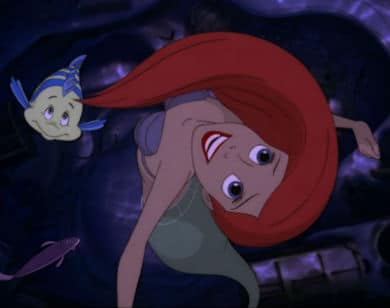
Photo: Disney
So, I suppose that, as far as lessons go, the first one is that your parents love you. Sometimes, there are rules in place that we don’t understand, but those rules come out of a place of love, and they really just want what’s best for us. Also, King Triton takes Ariel’s punishment and turns into a seaweed thing to save his daughter.
Even though she’s made some horrible choices, he loves her and will do anything to save her (I assume he would do the same for any of his seven daughters). Of course, the film also tells us that sometimes, parents are wrong. After all, they are only human. Triton was wrong about humans, and he realizes it in the end.
Secondly, sometimes going after your dreams is hard. While I disagree with Ariel’s method, selling her soul and her voice for a guy she doesn’t even know, it doesn’t change the fact that she knew what she wanted and threw herself wholeheartedly into achieving that dream.
Also, sometimes people don’t play fair. When you’re trying to achieve your dream, watch out for those who seem like they want to help you, or those people who might not want you to succeed. Ursula is just as single-mindedly pursuing her dream as Ariel is, and will stop at nothing to win. Regardless of how many lives she destroys, Ursula will be the ruler of the oceans, and is not above cheating to win.
Lest you think I’m advocating cheating to win, let’s not forget what happened to Ursula in the end.
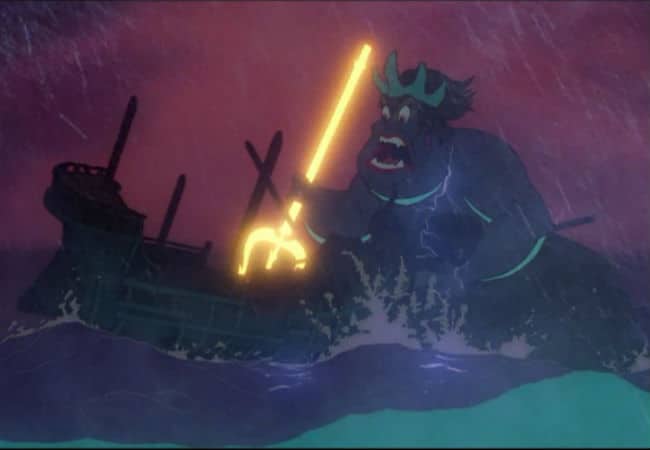
Photo: Disney
In typical Disney format, of course, there is also the lesson that love conquers all. Whether the love of parents for their children, the love of children for their parents, or romantic love, evil can’t stand between or stop love, and will lose when characters motivated by love go against it. There’s no greater power in the ‘Verse, and it’s even stronger than gravity.
Finally, The Little Mermaid, to me, is more about King Triton learning that he has to let his daughter go and live her own life. I heard an internet reviewer (the Nostalgia Chick), say that it’s really more of his story because he actually learns. He was wrong about all humans being evil, and he learns that he has to let his children grow up, even if he wants to keep them home and safe.
DOES IT HOLD UP?
Other than the plot having a few problems when you look at it as an adult that it didn’t have when you were a kid, The Little Mermaid is still an incredible film. It used a wonderful combination of old and new technologies, has an amazing soundtrack, the animation is incredible, and really, Ariel is pretty cool in that she is determined to go after her dreams. It’s a movie that really should be part of your world.
For next week: The Rescuers Down Under
If you enjoyed this post and the others in the Revisiting Disney series, and have found yourself wishing that you could find them all in one convenient and bound book with eight extra essays, there is an option for you! Check out A Journey Through Disney: My Look Back Through Disney Canon, now available on Amazon as both a Kindle book ($4.99) and a paperback ($11.99).
OTHER SOURCES:
https://thewaltdisneycompany.com/about-disney/disney-history
http://www.imdb.com
http://studioservices.go.com/disneystudios/history.html
http://www.history.com/topics/1980s
Bailey, Adrian. Walt Disney’s World of Fantasy. Everest House Publishers. New York, New York. 1982.
Finch, Christopher. The Art of Walt Disney: From Mickey Mouse to the Magic Kingdom. Harry N. Abrams, Inc. New York, New York. 1975.
Johnston, Ollie and Frank Thomas. The Disney Villain. Hyperion. New York, New York. 1993.
Sale, Roger. Fairy Tales and After: From Snow White to E.B. White. Harvard University Press. Cambridge, MA, 1978.
Tatar, Maria. The Annotated Classic Fairy Tales. W.W. Norton and Company. New York and London, 2002.
Thomas, Bob. Disney’s Art of Animation From Mickey Mouse to Hercules. Hyperion. New York, New York. 1992.
Wright, Gordon. The Ordeal of Total War: 1939-1945. Harper Torchbooks, Harper & Row. New York, Hagerstown, San Francisco, and London, 1968.
ARE YOU A ROMANCE FAN? FOLLOW THE SILVER PETTICOAT REVIEW:
 Our romance-themed entertainment site is on a mission to help you find the best period dramas, romance movies, TV shows, and books. Other topics include Jane Austen, Classic Hollywood, TV Couples, Fairy Tales, Romantic Living, Romanticism, and more. We’re damsels not in distress fighting for the all-new optimistic Romantic Revolution. Join us and subscribe. For more information, see our About, Old-Fashioned Romance 101, Modern Romanticism 101, and Romantic Living 101.
Our romance-themed entertainment site is on a mission to help you find the best period dramas, romance movies, TV shows, and books. Other topics include Jane Austen, Classic Hollywood, TV Couples, Fairy Tales, Romantic Living, Romanticism, and more. We’re damsels not in distress fighting for the all-new optimistic Romantic Revolution. Join us and subscribe. For more information, see our About, Old-Fashioned Romance 101, Modern Romanticism 101, and Romantic Living 101.

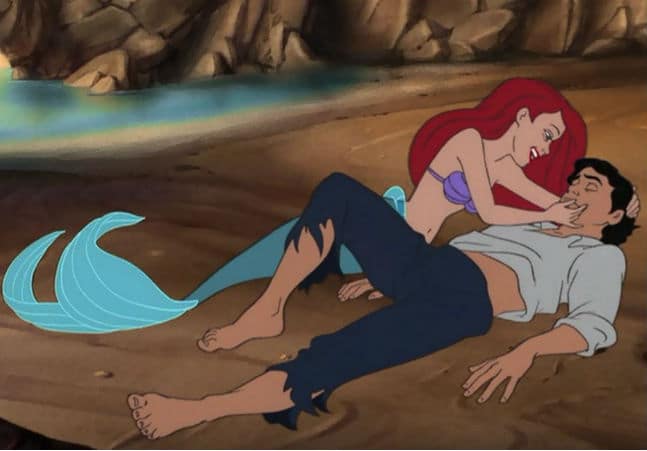

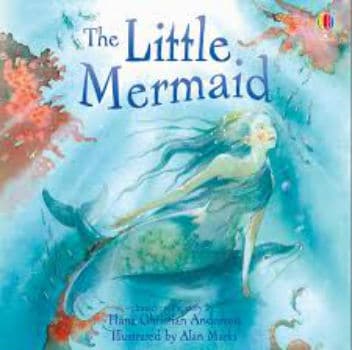
Comments are closed.